 Ahhh… Pavlov and the conditioned reflex. For those of you that stayed awake during high school science or psychology classes, this was the famous experiment where Russian physiologist Ivan Pavlov would ring a bell at the same time as offering a dog food, with the latter making the dog salivate in anticipation. Eventually, the dog was conditioned to salivate simply upon hearing the bell ring, even before the food was actually presented.
Ahhh… Pavlov and the conditioned reflex. For those of you that stayed awake during high school science or psychology classes, this was the famous experiment where Russian physiologist Ivan Pavlov would ring a bell at the same time as offering a dog food, with the latter making the dog salivate in anticipation. Eventually, the dog was conditioned to salivate simply upon hearing the bell ring, even before the food was actually presented.
Here at Kaizen Factor, however, the conditioned reflex works a bit differently. All it takes is for a senior Toyota official to declare something like, “during (insert year or period of time) Toyota will introduce (insert number) new or updated (possibly having a certain common characteristic) models” for this author to indulge in educated guesswork to figure out what, precisely, those vehicles will be. Indeed, our Informed Speculation series of articles have, in the past, built upon Executive Vice President in charge of Research & Development Takeshi Uchiyamada’s claim that Toyota would release 7 all-new and 4 next-generation versions of existing Toyota and Lexus hybrids by the end of 2012.
Concurrent with the Detroit Auto Show in early January, trade publication Automotive News holds its World Congress get-together of car industry executives. On 10 January 2012, Toyota Motor Sales U.S.A.’s Group Vice President and Toyota Division General Manager Bob Carter’s speech included this tidbit:
With the improving car market…along with a barrage of 19 new or updated Toyota, Scion and Lexus products…we expect 2012 to be a banner year for Toyota.
Yes, you heard right. We’re going to introduce one new or updated car every 19 days on average this year!
That’s unprecedented in Toyota’s history.
As this author…um…salivates at the prospect of guessing what, precisely those 19 models are, we need to put forth a trio of ground rules. The first is that, given that this particular pronouncement was made by Toyota U.S.A.‘s Bob Carter, we won’t consider models for other markets, such as the Euro-centric Toyota Avensis and Aygo mid-life facelifts or the upcoming made-in-France Yaris Hybrid that have already been revealed.
Second, we’re interpreting this to mean new or updated models launched during calendar year 2012, not necessarily model year 2012. Thus, new 2012 models that went on sale during the late 2011 calendar year such as Toyota’s Camry, Camry Hybrid, Prius v, Yaris and refreshed Tacoma, as well as the new-to-North America Scion iQ are specifically excluded from our listing, logic that is tacitly supported in the 7th paragraph of an article by David E. Zoia of WardsAuto.
Finally, we should note that, given Toyota and Lexus’ penchant for considering hybrid and non-hybrid versions of any given model as two separate versions, they’re probably using that logic in arriving at their 19 model count.
Although not contained in the Toyota USA Newsroom’s draft of Bob Carter’s speech, word soon got out that 9 out of the 19 new or updated models would wear the Lexus badge, at first via the aforementioned David E. Zoia of WardsAuto and the Hans Greimel / Mark Rechtin team from Automotive News, and then officially admitted by Lexus in their first-ever Super Bowl commercial press release. With two Scion-badged debuts expected during 2012, that leaves 8 new or revised Toyotas for the list.
Although listed in seemingly random order, the list can, in fact, be mentally divided into two separate “blocs”. The first 9 are the no-brainers, the Toyota, Scion and Lexus vehicles that have already been officially revealed to the world, in some cases as far back as a year ago or longer, but not available for purchase until the 2012 calendar year. The remaining 10 is where our informed speculation title comes in, with yet-to-be-revealed vehicles whose probabilities vary from highly likely to speculative wild-ass guesses that may well be bumped off the list by something else.
OK, enough qualifyers and preambles. Here’s our Informed Speculation list:
 1) Lexus GS 350
1) Lexus GS 350
With its slow, protracted rollout during 2011 (LF-Gh predictor concept at April’s New York Auto Show; 4th-gen GS 350 debut at Pebble Beach, California in August; GS 350 F Sport premiering at Las Vegas’ SEMA Show; and the debut of the not-for-North America GS 250 at China’s Guangzhou Auto Show, both in November) plus its familiar, predictable exterior styling, the latest iteration of the Lexus GS may not, on the surface, feel particularly “new”, but just wait until its February on-sale rollout, and you’ll be pleasantly surprised by the generational leap of its interior and, above all, by a driving experience that is miles ahead of its predecessors, one that is certain to produce anxiety attacks in Ingolstadt, Munich and Stuttgart.
 2) Lexus GS 450h
2) Lexus GS 450h
The hybrid version of the 4th-generation Lexus GS got its own dedicated public debut at the 2011 Frankfurt Auto Show. Like its predecessor, this is a performance-oriented hybrid with a 3.5-liter 2GR-FXE V6 that is a hybridized and more powerful derivative of the GS 350 engine. Due to go on sale after its non-hybrid sibling in spring 2012, it is, if anything, even more of an eye-opening improvement over the previous GS 450h. And, if published rumors (notably from England’s Auto Express) turn out to be true, the GS 450h may well be joined by a second more economy and low CO2 emissions-oriented hybrid sibling. Most rumors point towards a GS 300h powered by a variant of the new-for-2012 Toyota Camry Hybrid’s 2.5-liter 2AR-FXE 4-cylinder engine. A more remote possibility is a GS 350h powered by a new hybridized variant of the Lexus IS 250 and GS 250’s 4GR-FSE 2.5-liter V6.
 3) Toyota Prius c
3) Toyota Prius c
As Toyota’s Prius branches out into a family of Prii with the larger Prius v (a.k.a. Prius Alpha or Prius+), the subbrand now goes in the opposite direction with the smaller Prius c (for cookie city). This dive into Toyota’s deep parts bin essentially mates the 2550mm (100.4″) wheelbase iteration of the NBC platform (think outgoing Toyota Yaris / Vios / Belta sedan) with the 1NZ-FXE 1.5-liter 4 cylinder hybrid powertrain from the 2nd-generation (2004-2009) original Prius. Toyota has put a great deal of effort into making the mechanical components as compact and light as possible and in lowering the center of gravity (a major Toyota goal these days) as Prius c project manager Masahiko Yanagihara informed Bertel Schmitt of The Truth About Cars. About to go on sale in Japan as the Toyota Aqua, the Prius c will be available in the U.S. in March with a starting MSRP below $19,000. Expect it to obliterate what few sales the current 5-door Honda Insight still generates.
 4) Toyota Prius Plug-in
4) Toyota Prius Plug-in
After a rather long public introduction period (its North American debut was at the December 2009 Los Angeles Auto Show, and this author attended a technical briefing at the South Florida Auto Show in October 2010), the Toyota Prius Plug-in is finally about to go on sale. Its public rollout is just as protracted as its launch was, with order-taking for 14 launch states (California, Oregon, Washington, Arizona, Maine, Vermont, New Hampshire, Massachusetts, Rhode Island, Connecticut, New York, New Jersey, Maryland, and Virginia) having begun in October 2011 for Spring 2012 delivery, followed by a 2013 national rollout. The Prius Plug-in features a lithium-ion battery that provides an extended electric-only driving range of up to 15 miles at a maximum speed of 62 miles per hour. Charging times are 2.5-3 hours using a standard 120V outlet or 1.5 hours using 240V.
 5) Scion FR-S
5) Scion FR-S
The most highly anticipated affordable new sports car in a long time finally goes on sale this coming Spring. The phrase “game-changer” has probably devolved into cliché by now, but if any one car truly deserves that description, this is it. The collaboration with Subaru has brought out the best each company has to offer, and red-blooded car enthusiasts are anxiously awaiting its release. Sure, die-hard Toyota fans remind us that none of the company’s golden-age sports cars bore the Scion badge, while others fret that Subaru’s marketing and two trim-level offering for the BRZ are trumping Scion’s traditional mono-spec plans, but all this pales to the hearty celebrations and hosannas for the return of the reliable, affordable rear-wheel-drive Japanese 2+2 sports coupe in new-car showrooms.
 6) Toyota Land Cruiser
6) Toyota Land Cruiser
Many Toyota fans fret over the similarities between the Toyota Land Cruiser and its Lexus LX 570 sibling, eloquently expressed by the Toyota’s ranking among the 10 least-selling vehicles by a mass-market brand. After all, if you’re spending over $70,000 on a super-capable SUV, may as well get one with a luxury badge and its commensurate dealer VIP treatment. So, what does Toyota do for the current Land Cruiser’s first mid-life facelift going on sale this month as a 2013 model? Bring it even closer to the Lexus LX by adding a large, chrome-trimmed body side molding and adding “over $2,500 in new and updated equipment, inside and out” and making the features of the previously optional Upgrade Package standard! Once you get over the eye-popping $77,955 base MSRP for the 2013 Land Cruiser, head on over to Expedition Portal and read Scott Brady’s spot-on take on the subject.
 7) Lexus LX 570
7) Lexus LX 570
Like its Toyota-badged fraternal-verging-on-identical twin described above, the current iteration of Lexus’ top-of-the-line SUV receives its first mid-term refresh. Most obviously, the LX becomes the third model (after the CT and 4th-generation GS) to receive the new-face-of-Lexus spindle grille, as well as new Turn Assist (which tightens the turning circle by adding more brake force to the inside rear wheel) and Multi-terrain Select (allowing for a choice of five types of terrain settings) features. Expect it at your local Lexus dealer in early February with an MSRP of $80,930, or almost $3000 over the Land Cruiser. As we said earlier, a no-brainer which one to go for. By the way, the LX 570, like the Toyota Land Cruiser and 4th-generation Lexus GS, skips the 2012 model year altogether and goes straight from 2011 to extended 2013 model year.
 8) Scion iQ EV
8) Scion iQ EV
After a couple of launch delays, the North America-market Scion iQ was nonetheless barely excluded from our “list of 19” by virtue of the 248 units sold in the western United States during December 2011. Yet to go on sale, but expected by the end of this calendar year, is a limited run of battery-electric Scion iQ EVs. A Toyota-badged prototype, as shown above, debuted last March at the 2011 Geneva Auto Show. Information on the Toyota USA Newsroom is scant, except to predict a range of less than 50 miles per charge and a small run of cars available only to demonstration programs such as fleets and short-distance urban car-sharing programs. The Integrity Exports website adds that there will be an initial run of 600 cars, with 400 remaining in Japan, 100 earmarked for Europe and the final hundred coming to the United States wearing the Scion badge.
 9) Toyota RAV4 EV
9) Toyota RAV4 EV
Back in May 2010, we amply reported on the Toyota/Tesla collaboration, which, soon enough, begat a Demonstration Vehicle prototype battery electric 3rd-generation Toyota RAV4 EV that debuted at the 2010 Los Angeles Auto Show with the promise of a late 2012 on-sale date. The carmaker’s second BEV launch this year harkens back to the first RAV4 EV that was available from 1997-2003. Those of you with long memories may recall that this resulted in an odd product cadence where, after the 2001 model year 1st-gen RAV4 EVs were sold alongside newer 2nd-gen gasoline-powered RAV4s. Given that the current RAV4 has been around since the 2006 model year, will history repeat with the post-2013 RAV4 EV an offshoot of the 3rd-generation RAV4 that will soon be superseded by a 4th-generation gasoline version? This author’s admittedly hazy crystal ball says no…
 10) Toyota RAV4
10) Toyota RAV4
With its debut in late 2005 as a 2006 model, the current RAV4 has been the longest-lived gasoline or diesel-powered generation of Toyota’s pioneering small crossover SUV, now in its 7th model year with but a single mid-term refresh in 2009. Would Toyota really launch a RAV4 EV this year in such an aging model? We doubt it. And this author isn’t alone in his skepticism, as Car and Driver‘s Jon Yanca noted that, “Toyota made a point to say that the (2010 RAV4 EV) demonstration vehicles will be based on current-generation cars, which sure makes it sound like the appearance of the fully baked version will coincide with the launch of the next RAV4. So there’s one useful thing we learned—maybe.” Even more useful, however, would be a return to its roots as a short, strictly 2-row seating model such as Japan and Europe get, and not the current North America and Australia super-size that is barely shorter than the Toyota Highlander.
 11) Toyota RAV4 Hybrid
11) Toyota RAV4 Hybrid
With the existence of a Toyota RAV4 EV that will supposedly be available in significantly greater numbers than the 100-car test run of Scion iQ EVs, should we really expect a RAV4 Hybrid? Back in November 2010 this author wrote that, “With all the talk of the full-electric Toyota/Tesla RAV4 EV, a separate hybrid RAV4 is unlikely, but you never know.” In retrospect, we feel that prediction to be erroneous, and that we will see a RAV4 Hybrid to plug the price and fuel economy gap between a gasoline and full-electric RAV4. Other factors include the lack of a 4-cylinder hybrid crossover SUV with an all-wheel-drive option in Toyota’s lineup and, to a lesser extent, Ford’s mix of hybrid, plug-in hybrid and full-electric variants of its Focus and C-Max lines.
 12) Toyota Avalon
12) Toyota Avalon
Toyota Division General Manager Bob Carter’s speech at the Automotive News World Congress also included this enigmatic clue: “You’ll see an outstanding example of a locally developed new product later this year. I can’t say much about it other than its name has a letter “A” or two in it”. While Venza, Sienna, Tundra, Sequoia, maybe Matrix or even an improbable and highly unlikely Solara revival could fit this U.S.-developed description, odds are he’s talking about the 4th-generation Toyota Avalon. The current iteration of Toyota’s full-size front-wheel-drive sedan is certainly overdue for a major change, given its 2005 model year debut and 2 mid-life facelifts. In June 2011, a Toyota dealers’ national meeting in Las Vegas included a preview of both the 2012 Camry and the upcoming Avalon. Reportedly, they were far more excited by the latter, likening the new Avalon’s styling to the Audi A7 and current Jaguar XJ. Given the Avalon’s precedent of Chicago Auto Show debuts, we may well see the newest version of Toyota’s large sedan unveiled at the show’s Wednesday 8 and Thursday 9 February press conferences.
 13) Lexus ES 350
13) Lexus ES 350
Where the Toyota Camry goes, the Lexus ES closely follows, at least as far as total makeovers go. Hardly surprising, given their common mechanicals and roots. Current rumors peg the debut of the 6th-generation Lexus ES during the 2012 New York Auto Show press conferences on Wednesday 4 and Thursday 5 April, alongside the unveiling of the production version its archrival, the smokin’ hot 2nd-generation Lincoln MKZ. Given that the current Lexus ES is the brand’s best-selling model in China (and, in fact, among the 5 top-selling luxury vehicles there), the premium that frequently chauffeur-driven Chinese executives place on rear seat leg room, and no plans for a Chinese market long-wheelbase version of the new GS sedan all suggest that the new ES may well skew closer to Avalon than Camry in size and proportions.
 14) Lexus ES 300h
14) Lexus ES 300h
As we reported back in December 2010, Toyota applied for U.S. and Canadian trademarks for ES 300h for use by its Lexus division. Likely to debut alongside its non-hybrid counterpart in New York, the first-ever hybrid Lexus ES will probably share the latest Camry Hybrid’s 2AR-FXE 2.5-liter 4-cylinder hybrid engine. Given the rave reviews this new powertrain has received, not to mention its noticeably improved fuel economy versus its 6th-generation Camry Hybrid predecessor, expect this to be the final death knell for the underperforming Lexus HS. Also, don’t be too surprised if, at some point, this Lexus ES and ES h becomes the second Lexus model to be built in North America, be it in Canada’s Cambridge, Ontario South Plant alongside the RX 350 or in the U.S. at a new Lexus-caliber facility within Toyota’s Georgetown, Kentucky manufacturing complex.
 15) Lexus RX 350
15) Lexus RX 350
Having debuted in November 2008 at the Los Angeles Auto Show, the current 3rd-generation (AL10) Lexus RX is just about due for its mid-life refresh. At a minimum, expect a revised front with Lexus’ new spindle grille, plus new wheel styles and revised taillight inserts for Lexus’ most popular model in the United States. One possible surprise, however, was hinted at by Hans Greimel and Mark Rechtin of Automotive News as they quote Lexus general manager Mark Templin’s statement that “Lexus will launch nine new or updated models this year, plus three F-Sport variations“. With the new GS F-Sport being the first, might an RX 350 F-Sport be the second? Unlikely as this notion may sound to some, don’t forget that the RX currently offers an unheralded Sport Package with sport-tuned suspension and VDIM.
 16) Lexus RX 450h
16) Lexus RX 450h
The bulk of what we wrote above for the RX 350, naturally, also goes for its RX 450h hybrid sibling. One probable exception, though, would be the slim likelihood of an RX 450h F-Sport for North America. CT 200h F-Sport notwithstanding, Japan and Europe seem to be far more amenable to the notion of F-Sport hybrids than the New World is. For proof, just look at 4th-generation GS offerings here versus other markets.
 17) Lexus LS 460
17) Lexus LS 460
With the current, 4th-generation (XF40) Lexus LS having debuted for the 2007 model year and received but a single mid-life refresh for 2010, the time seems ripe for the rollout of its 5th-gen successor. Though details are scant-to-nonexistent at this point, we expect a protracted, multi-continent rollout of its diverse variants, akin to what we saw for the 4th-generation Lexus GS. Assuming that April’s 2012 New York Auto Show is earmarked for the ES, possible LS debut venues include Pebble Beach, California in August; Paris in September; and Los Angeles and Guangzhou, China in November. Given that the Lexus LS’s archrivals Audi A8, BMW 7-Series and Mercedes-Benz S-Class all currently or will soon offer 6-cylinder versions of their flagships even in North America, we wouldn’t be surprised to see an LS 350 powered by the 2GR-FSE 3.5-liter V6. On the reverse side of the coin, might a 5th-gen LS F-Sport be the third new thusly-badged model that Mark Templin was hinting at?
 18) Lexus LS 600h
18) Lexus LS 600h
Again, there isn’t much to add to what was said above for the Lexus LS’s hybrid variant. Given the rumored 2-pronged economy hybrid/performance hybrid strategy for the new Lexus GS, plus the current or upcoming availability, even in North America, of diesel-powered Audi A8 and Mercedes S-Class models, an LS 450h powered by the Lexus GS 450h’s 3.5-liter 2GR-FXE hybrid V6 to be sold alongside the LS 600h L and its 2UR-FSE 5-liter hybrid V8 sounds like a natural strategy.
19) mystery large Toyota hybrid
Unexpectedly hinted at during Bob Carter’s Automotive News World Congress speech, this one deserves its own separate Kaizen Factor article. Stay tuned…
Other possibilities
As is the norm for this sort of Informed Speculation articles, there are a number of seemingly more remote, secondary possibilities that may well shove some of these entries off the list. They are definitely worth exploring.
With Scion focused on expanding previously-delayed gasoline-powered iQ availability beyond the U.S. west coast, rolling out the highly-anticipated FR-S coupe and the 100 electric iQ EVs, we wouldn’t expect more from them besides a token Release Series or two of an existing model. What about Scion’s long-standing tradition of always revealing something at the New York Auto Show, you say? More often than not, this is a concept vehicle, as opposed to a new production model, and that’s certainly what we’d expect this year.
At Lexus, some of you may be baffled at the inclusion of the 5th-generation LS ahead of the 3rd-generation IS. After all, the 3rd-generation (S190) GS launch at the 2005 Detroit Auto Show in January was swiftly followed by the 2nd-generation (XE20) IS debut at Geneva in March of that year. Our rationale is that the current LS has received only a single mid-cycle refresh and no talk of a delay from its traditional 6-year cycle between major changes, whereas the current IS has received two mid-cycle refreshes amidst talk of a 1-year delay versus original 3rd-gen launch plans. Thus, IS can more logically stand to be released after LS.
There are also hopes that the trademarked-in-mid-2009 CT 300h name might become an actual, more powerful option for the successful entry-level Lexus CT line. But would a new engine option without a mid-cycle refresh count as one of the 19 anyway? We’d guess not. As to rumors of a sub-RX, RAV4 based Lexus SUV or a larger, 7-seat crossover, sure, they’d be logical additions to the line, but with Lexus’ hands full juggling the cadence of renewing its four core sedan lines, don’t expect to see them as production vehicles debuting during this calendar year.
Toyota’s broad model line, of course, makes for the largest margin of error on this list. Starting at the bottom, the new-for-2012 in North America 3rd-generation (XP130) Toyota Yaris hatchbacks are still awaiting a notchback sedan sibling. But will it ever come? Just over two years after the newest Yaris debuted in Japan as the Toyota Vitz, we are still awaiting the next generation of its Japanese Domestic Market sedan counterpart, the Belta. And no new Belta nor Yaris sedan also means no new Vios for southeast Asia. With Honda and Mazda adopting a no-sedan-for-North America strategy for their Yaris-rivaling Fit and 2 lines, Toyota may well be following suit.
Corolla and Matrix? Nah. The North American Corolla appears one year later than its Japanese Corolla and European Auris siblings, and the latter isn’t expected to be unveiled until this September’s Paris Auto Show. The Sienna minivan? Another unlikely, since the 2011 model year debut of its 3rd-generation puts its mid-term refresh at some point next year at the earliest. Highlander? With the current model’s 2011 model year mid-life facelift, also improbable. On the other hand, their Venza sibling is a prime candidate for bumping something off the list, since it has been around since the 2009 model year without the benefit of a mid-term refresh. A 2013 model year mid-term refresh at the end of this year for the current, new-for-2010 Toyota 4Runner and its Lexus GX 460 sibling also rates a maybe, while our esteemed co-editor Flipside909 has also suggested the possibility of a second mid-term refresh for the Tundra and Sequoia.
 Back in 17 November 2010, a Toyota RAV4 press release concluded by informing us, in an almost throwaway fashion, that “by the end of 2012, Toyota will add seven all new (not next-generation) hybrid models to its portfolio”. We scrambled to figure out what they were, and 2 days later, the first of our Informed Speculation stories was posted. Right about that same time, our co-editor Flipside909 stumbled upon a Yahoo News/AFP story stating that Toyota would, in fact, release 11 new hybrids by the end of calendar year 2012. This was confirmed by Automotive News‘ Hans Greimel on 22 November 2010, and, the next day, our sequel Informed Speculation story appeared.
Back in 17 November 2010, a Toyota RAV4 press release concluded by informing us, in an almost throwaway fashion, that “by the end of 2012, Toyota will add seven all new (not next-generation) hybrid models to its portfolio”. We scrambled to figure out what they were, and 2 days later, the first of our Informed Speculation stories was posted. Right about that same time, our co-editor Flipside909 stumbled upon a Yahoo News/AFP story stating that Toyota would, in fact, release 11 new hybrids by the end of calendar year 2012. This was confirmed by Automotive News‘ Hans Greimel on 22 November 2010, and, the next day, our sequel Informed Speculation story appeared.

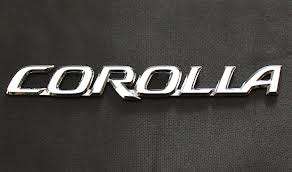
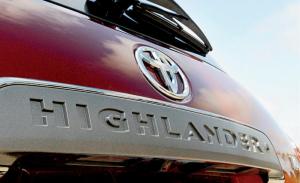
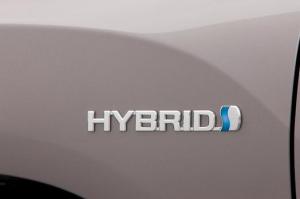
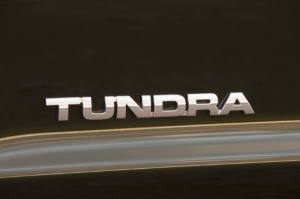
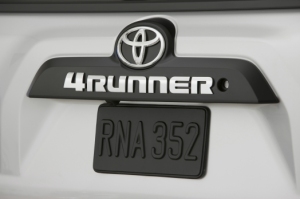
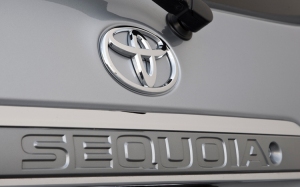
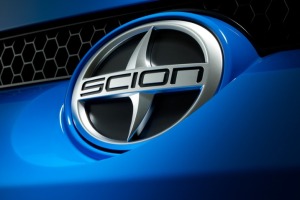


 1) Lexus GS 350
1) Lexus GS 350 2) Lexus GS 450h
2) Lexus GS 450h 3) Toyota Prius c
3) Toyota Prius c 4) Toyota Prius Plug-in
4) Toyota Prius Plug-in 5) Scion FR-S
5) Scion FR-S 6) Toyota Land Cruiser
6) Toyota Land Cruiser 7) Lexus LX 570
7) Lexus LX 570
 9) Toyota RAV4 EV
9) Toyota RAV4 EV
 11) Toyota RAV4 Hybrid
11) Toyota RAV4 Hybrid
 13) Lexus ES 350
13) Lexus ES 350
 15) Lexus RX 350
15) Lexus RX 350 16) Lexus RX 450h
16) Lexus RX 450h 17) Lexus LS 460
17) Lexus LS 460 18) Lexus LS 600h
18) Lexus LS 600h

 Toyoda then fondly recalled his first exposure to the brand roughly 30 years ago during a visit to Lotus’ testing grounds. He took a car for a spin around the track and toured Lotus’ underground workshop, a visit he likened to “descending into a James Bond 007 world.” and added that he considers the Lotus Elise the very embodiment of fun-to-drive. Vividly proving this, as Toyoda sat behind the wheel of his new toy, he stomped on the gas, drove through a line of startled reporters and revved the engine in an impromptu spin around the embassy grounds.
Toyoda then fondly recalled his first exposure to the brand roughly 30 years ago during a visit to Lotus’ testing grounds. He took a car for a spin around the track and toured Lotus’ underground workshop, a visit he likened to “descending into a James Bond 007 world.” and added that he considers the Lotus Elise the very embodiment of fun-to-drive. Vividly proving this, as Toyoda sat behind the wheel of his new toy, he stomped on the gas, drove through a line of startled reporters and revved the engine in an impromptu spin around the embassy grounds. Lotus Elise SC Final Edition
Lotus Elise SC Final Edition Lotus Exige S260 Final Edition
Lotus Exige S260 Final Edition Lotus Exige S260 Final Edition – Matte Black
Lotus Exige S260 Final Edition – Matte Black Less clear is what happens to the Lotus Exige going forward. Its two current models, the Exige S and Exige Cup 260 are powered by differently-tuned supercharged variants of the soon-to-be-extinct 2ZZ engine, and there have been no indications that it would be down-powered in the manner of its Elise. And, quite notably, the Exige did not receive the
Less clear is what happens to the Lotus Exige going forward. Its two current models, the Exige S and Exige Cup 260 are powered by differently-tuned supercharged variants of the soon-to-be-extinct 2ZZ engine, and there have been no indications that it would be down-powered in the manner of its Elise. And, quite notably, the Exige did not receive the 
 Lotus Evora S
Lotus Evora S





